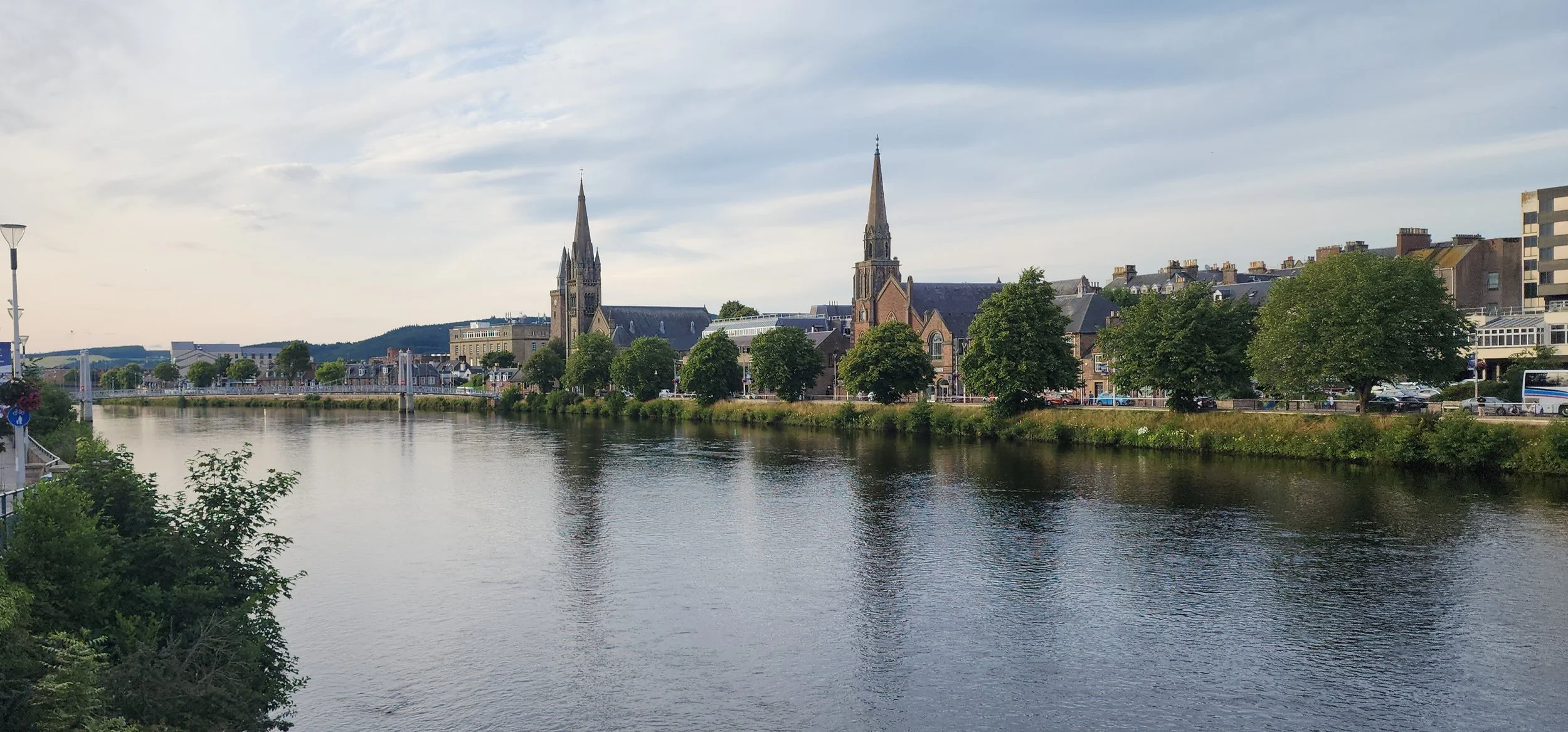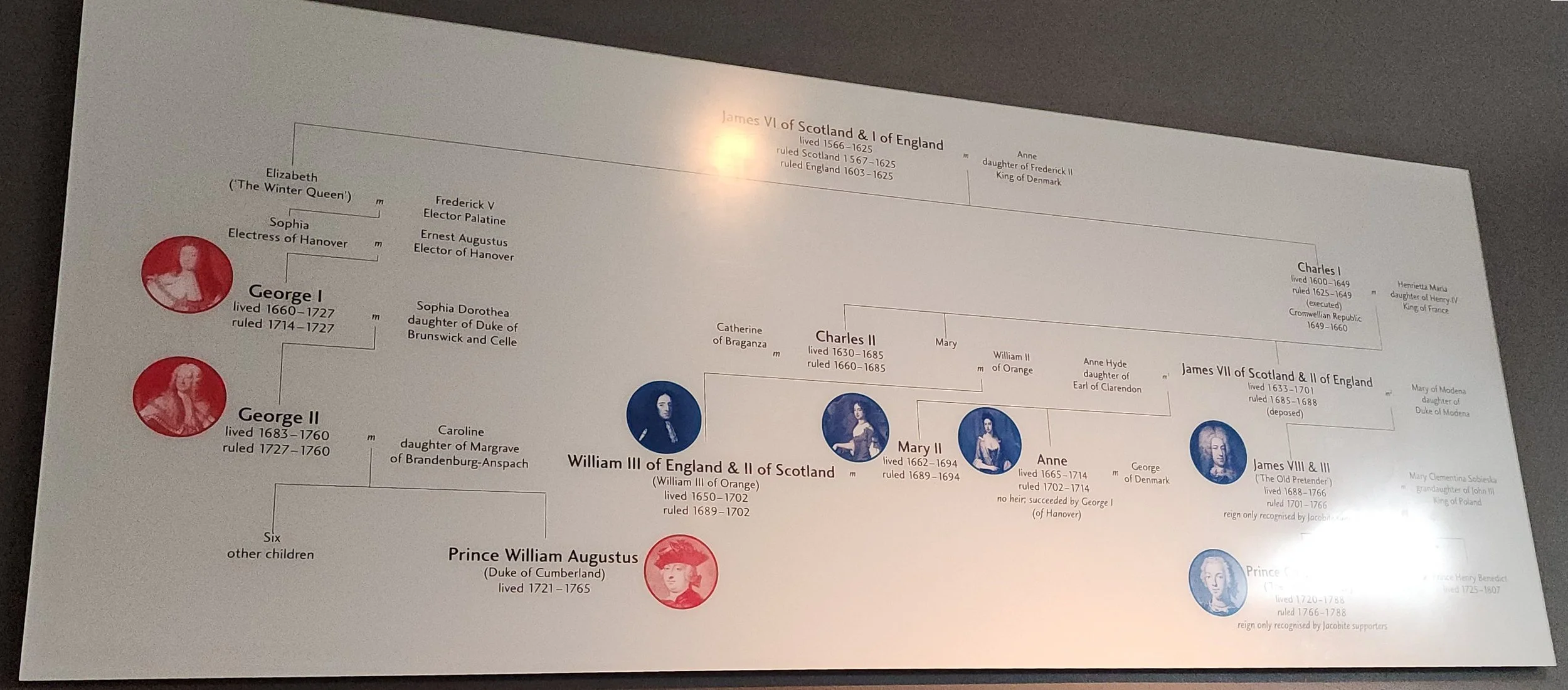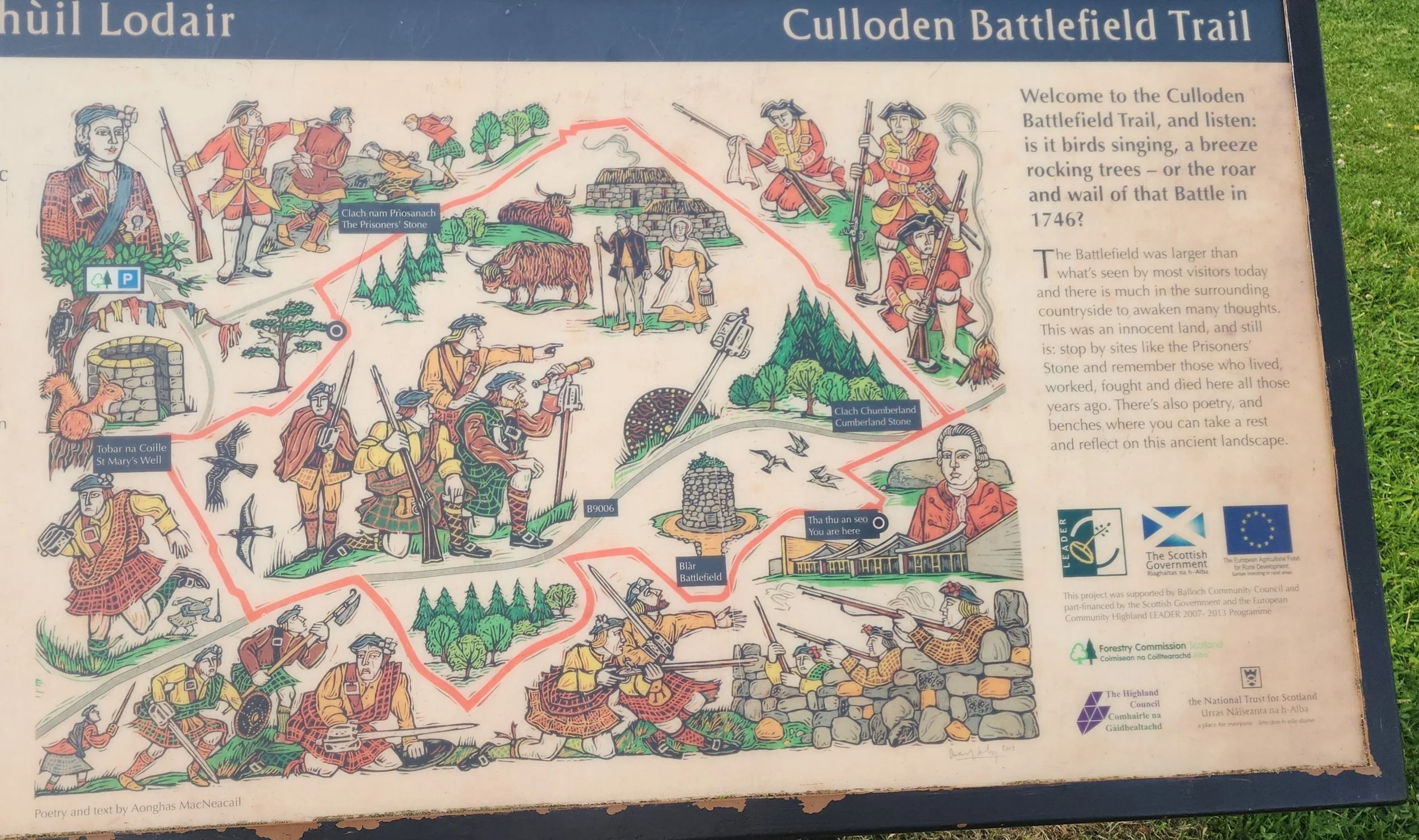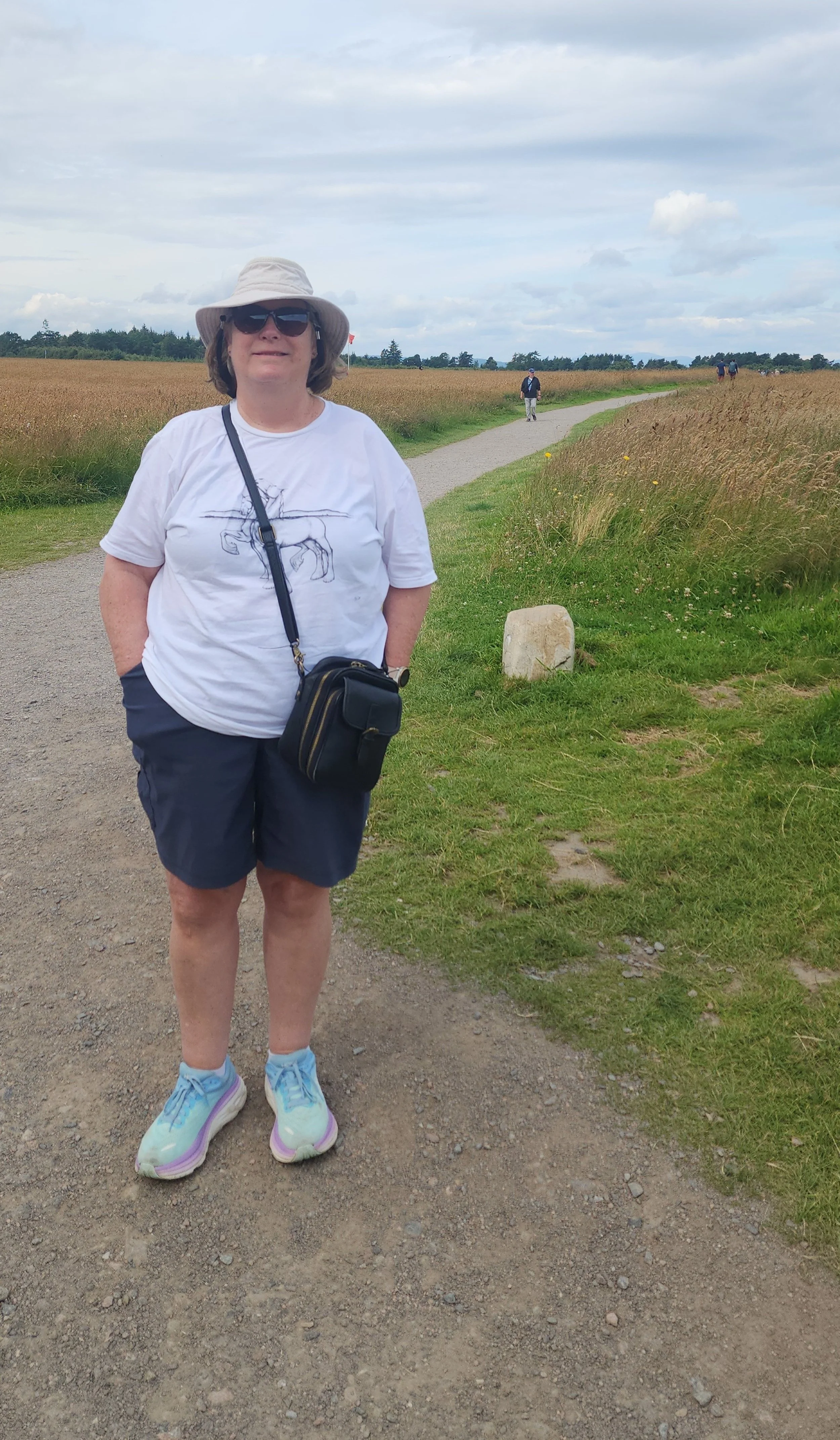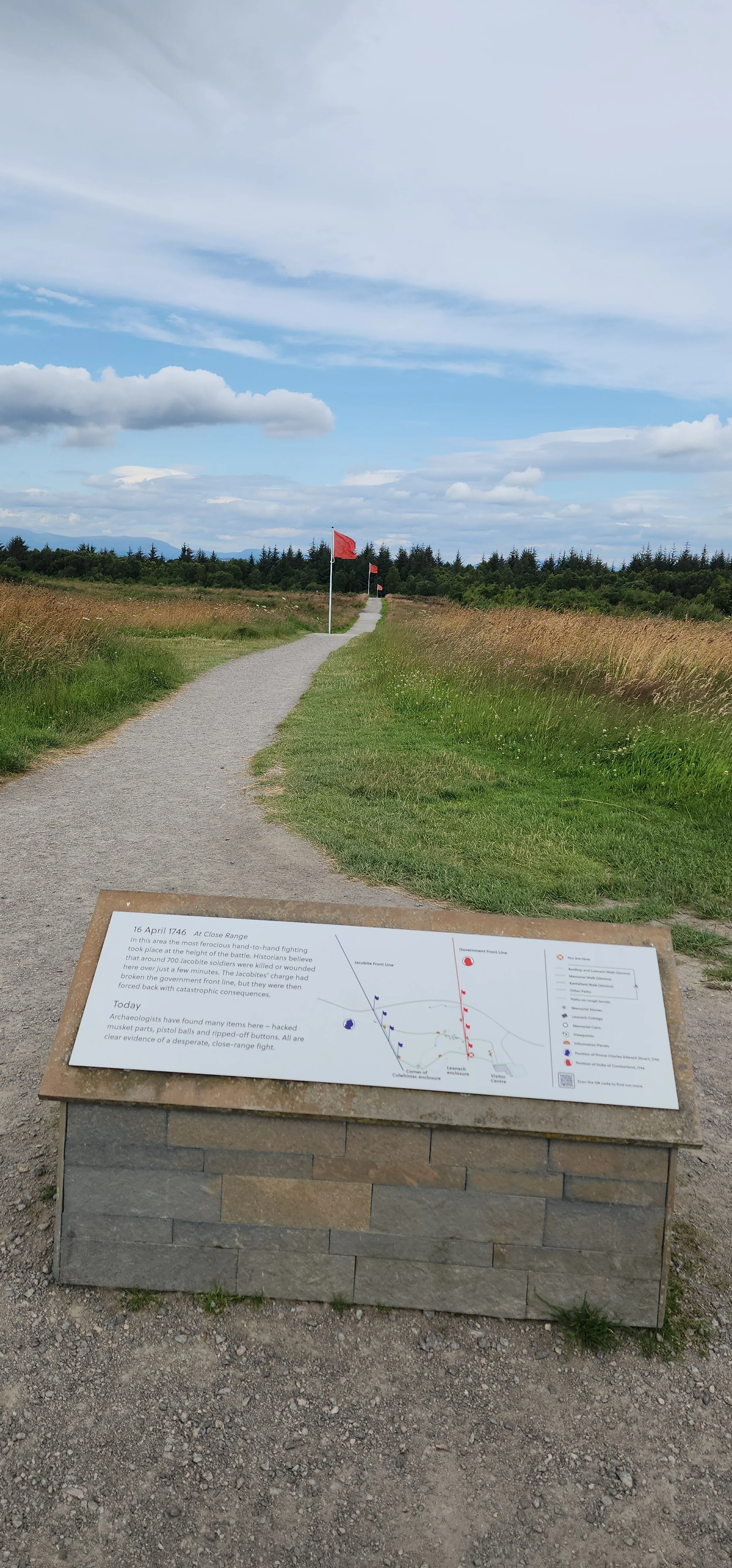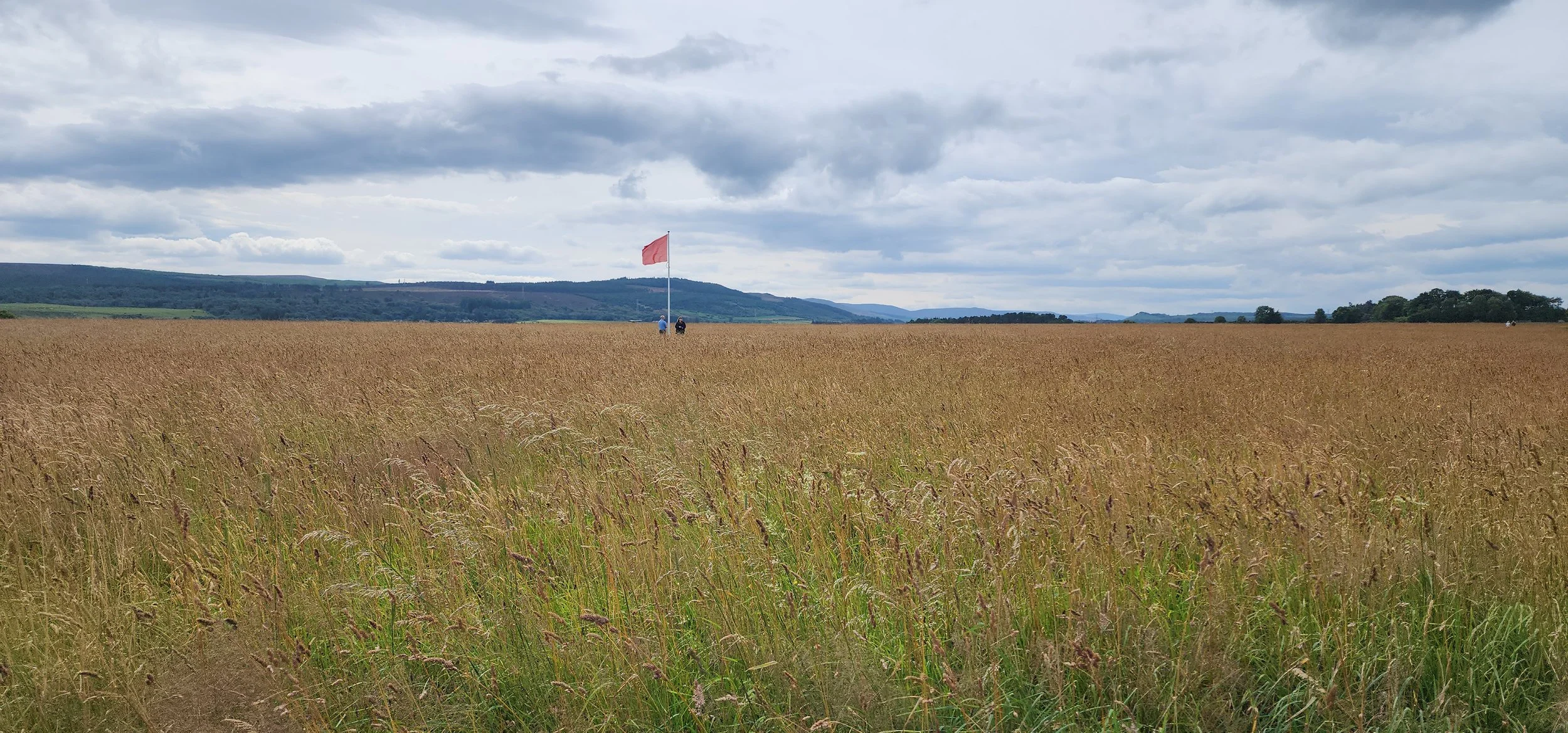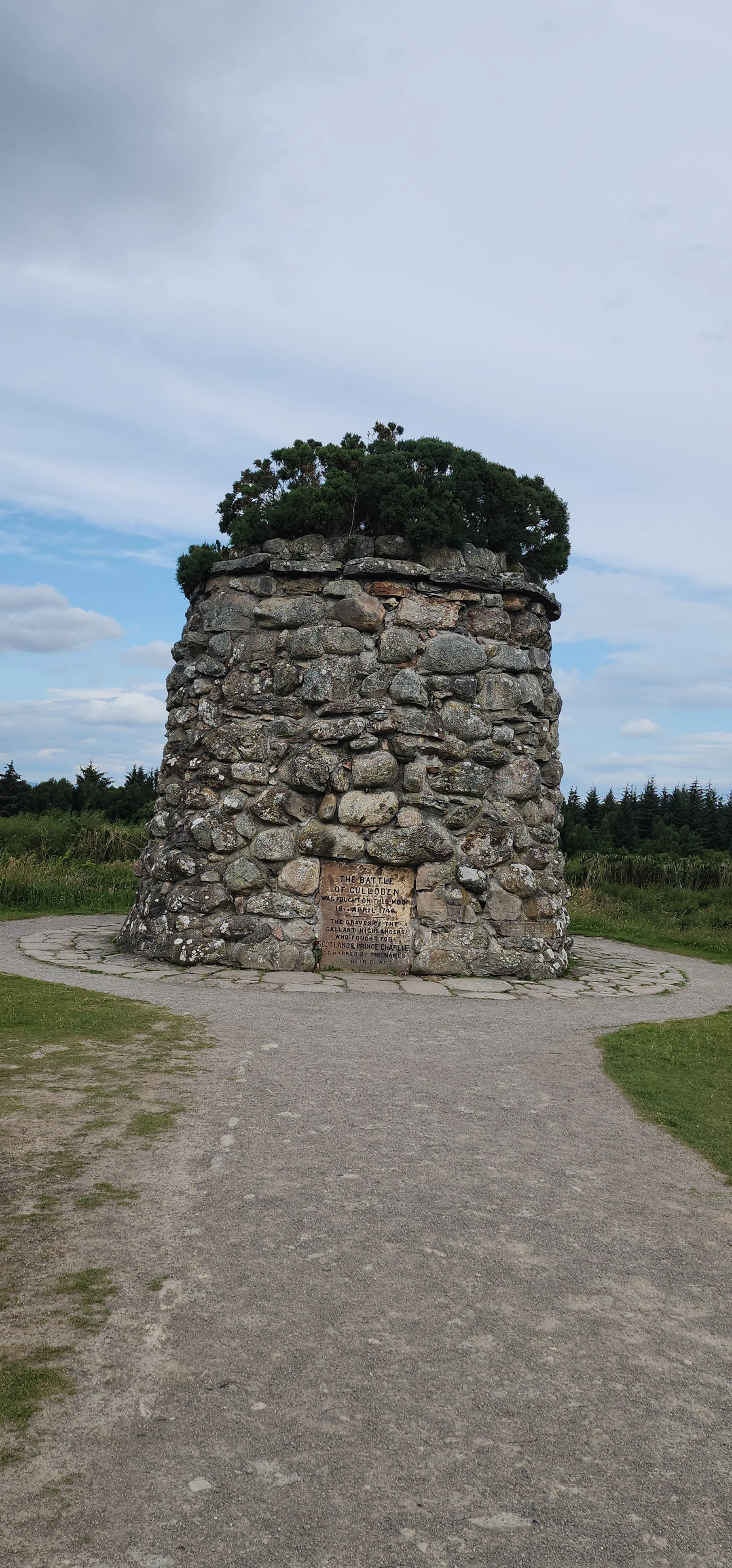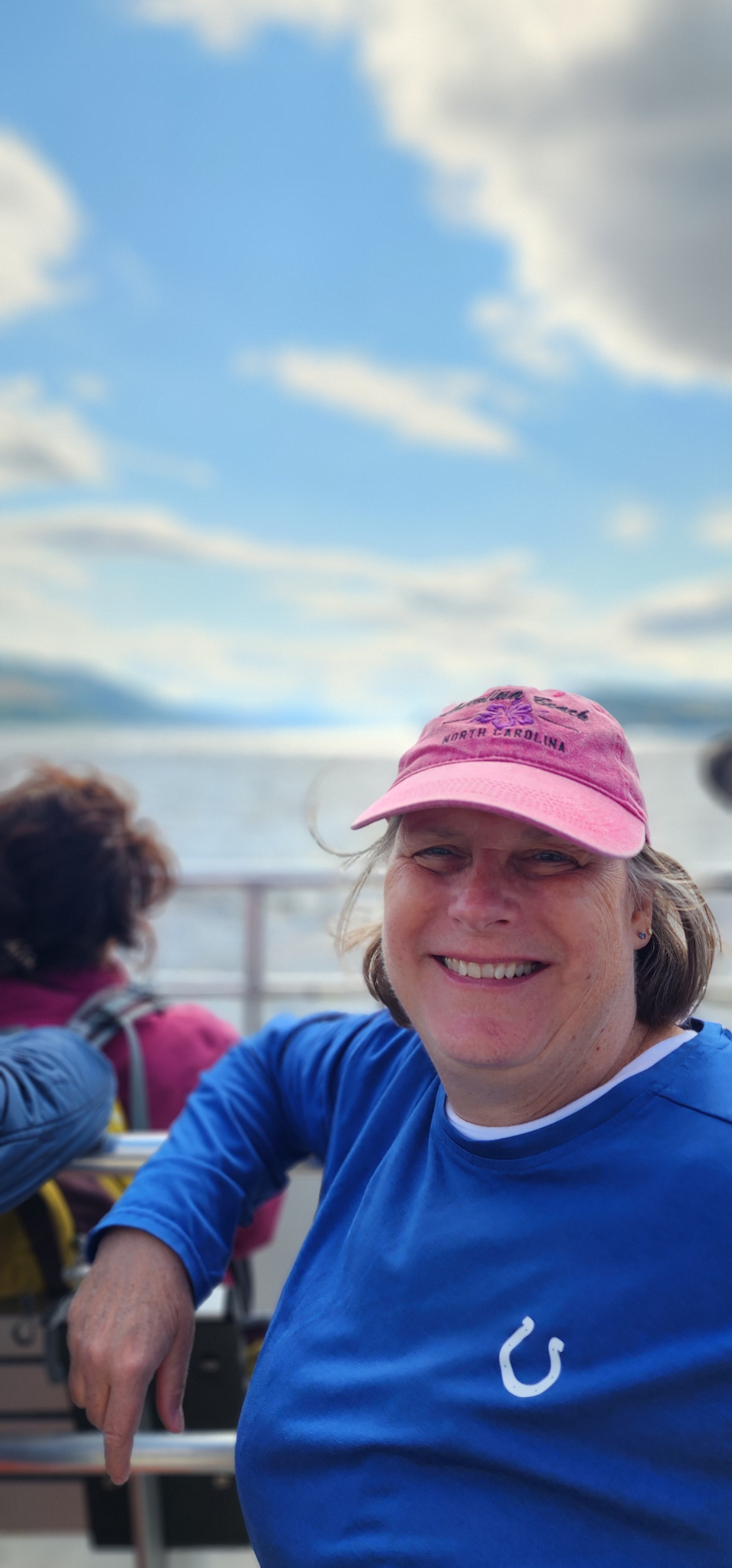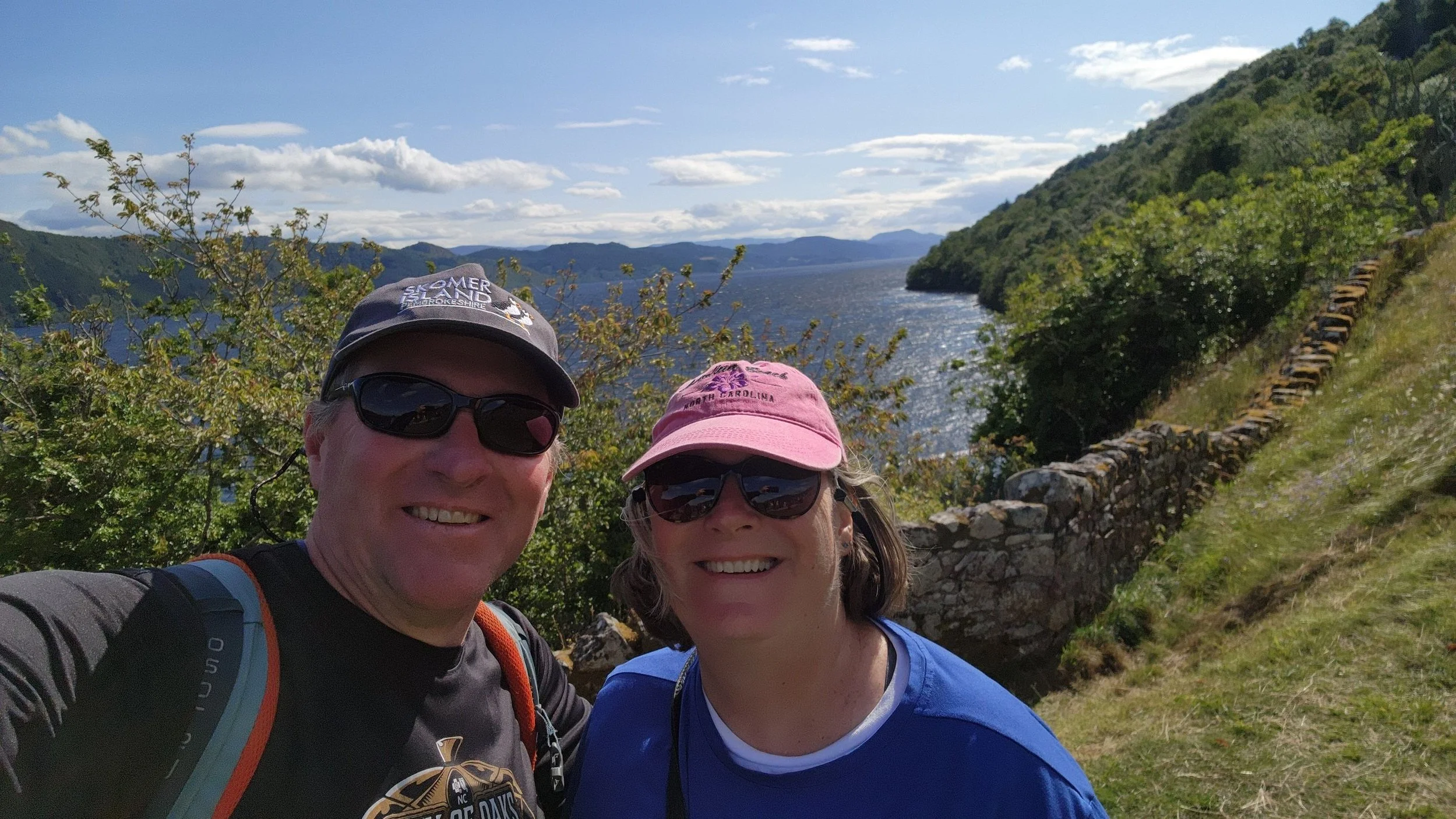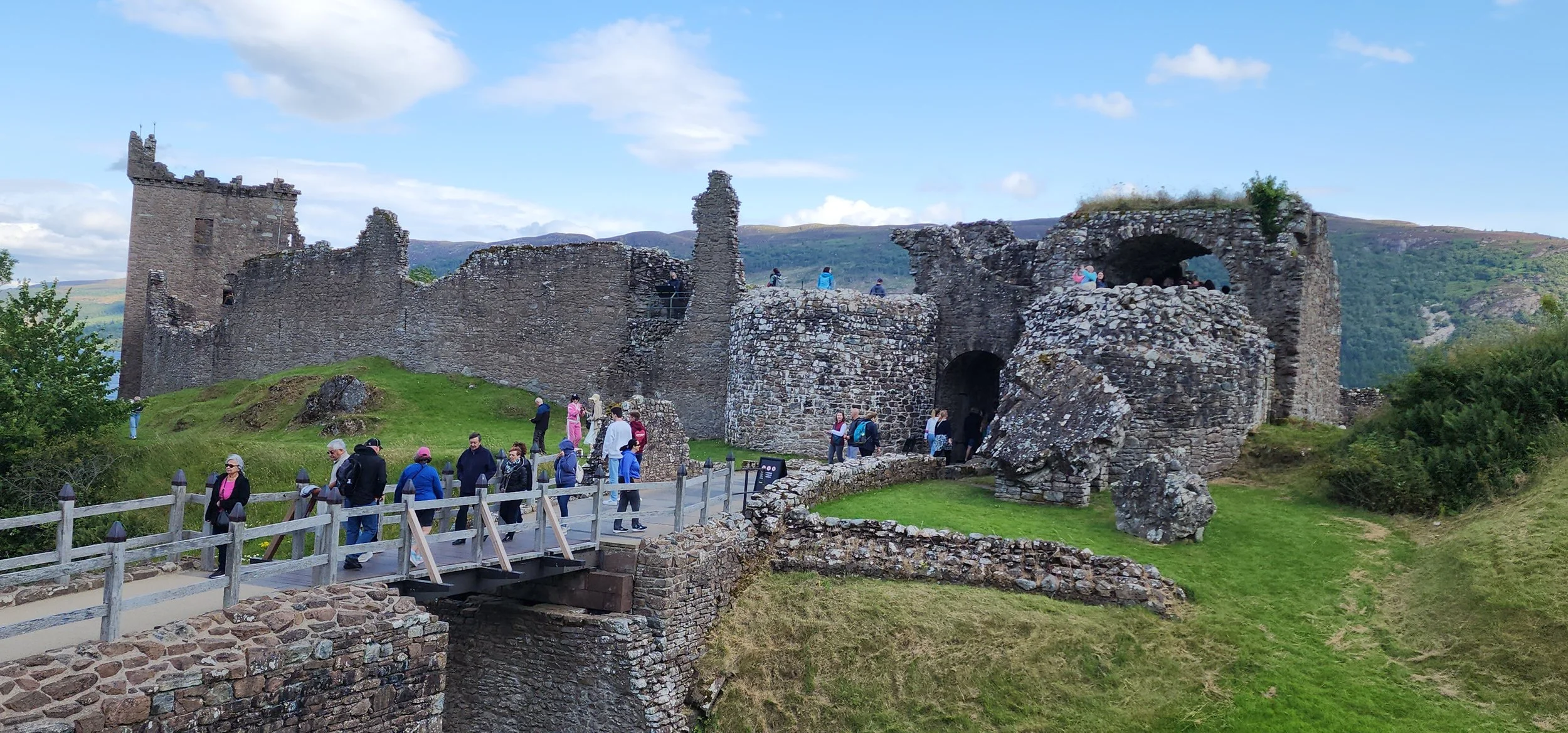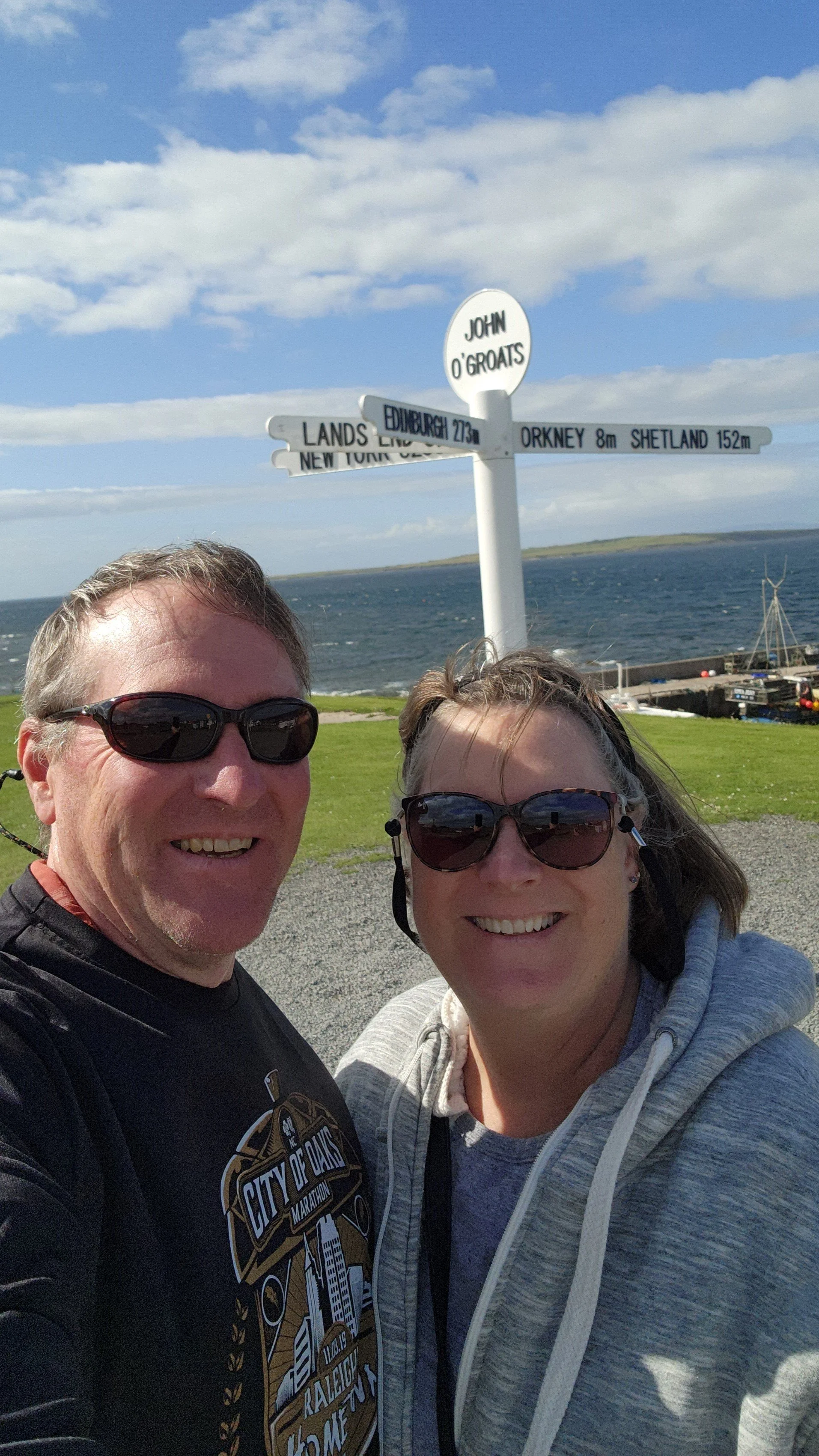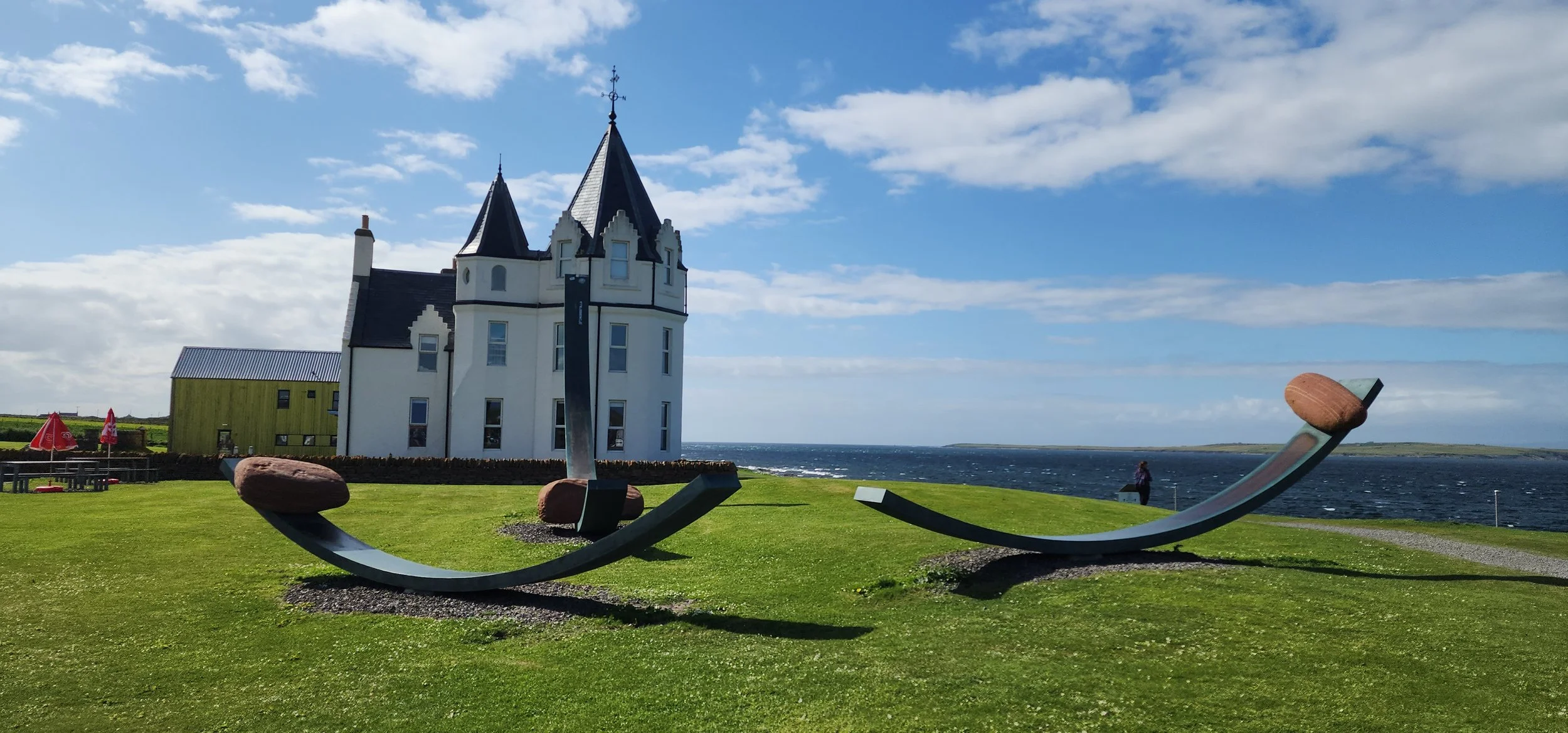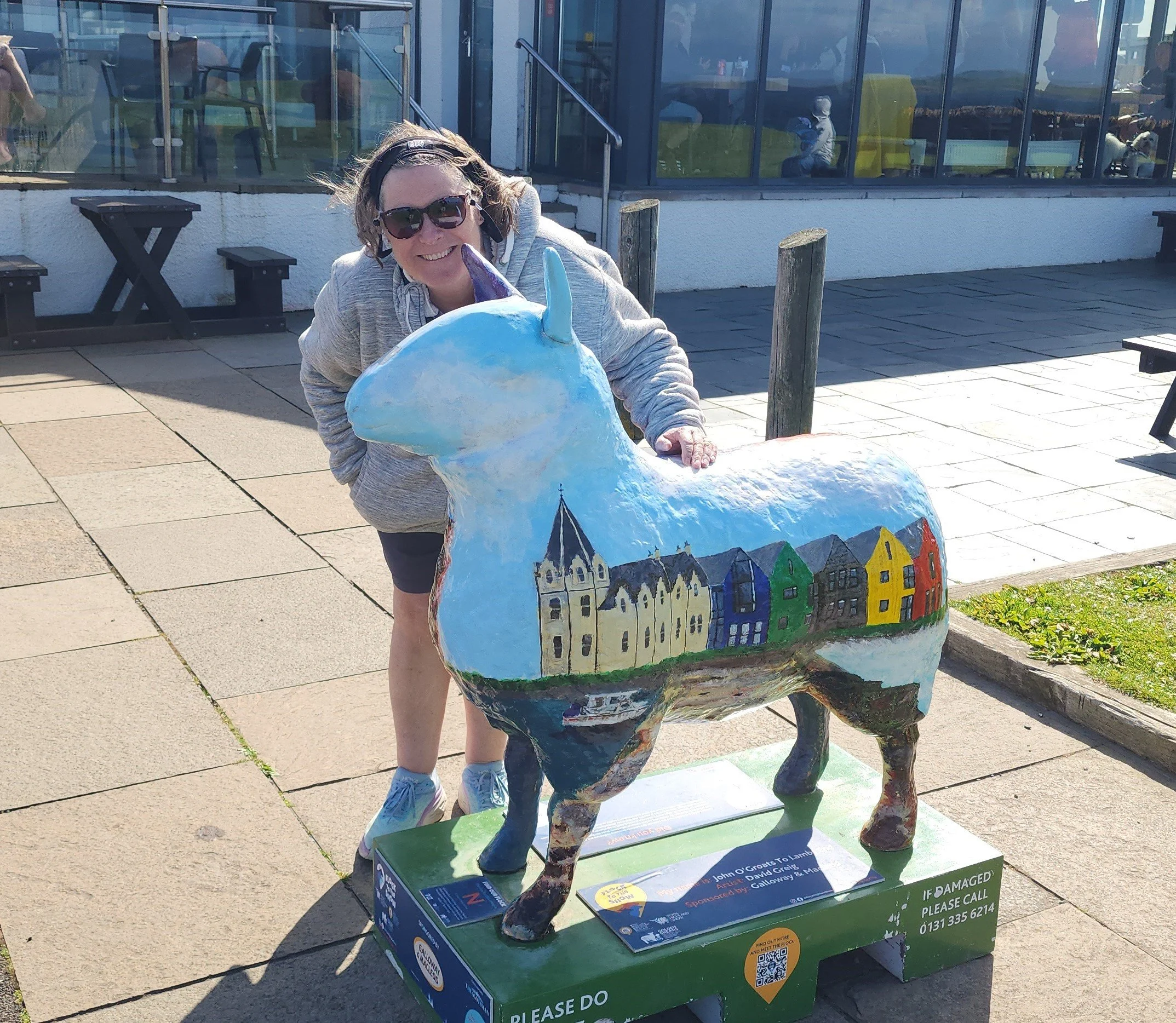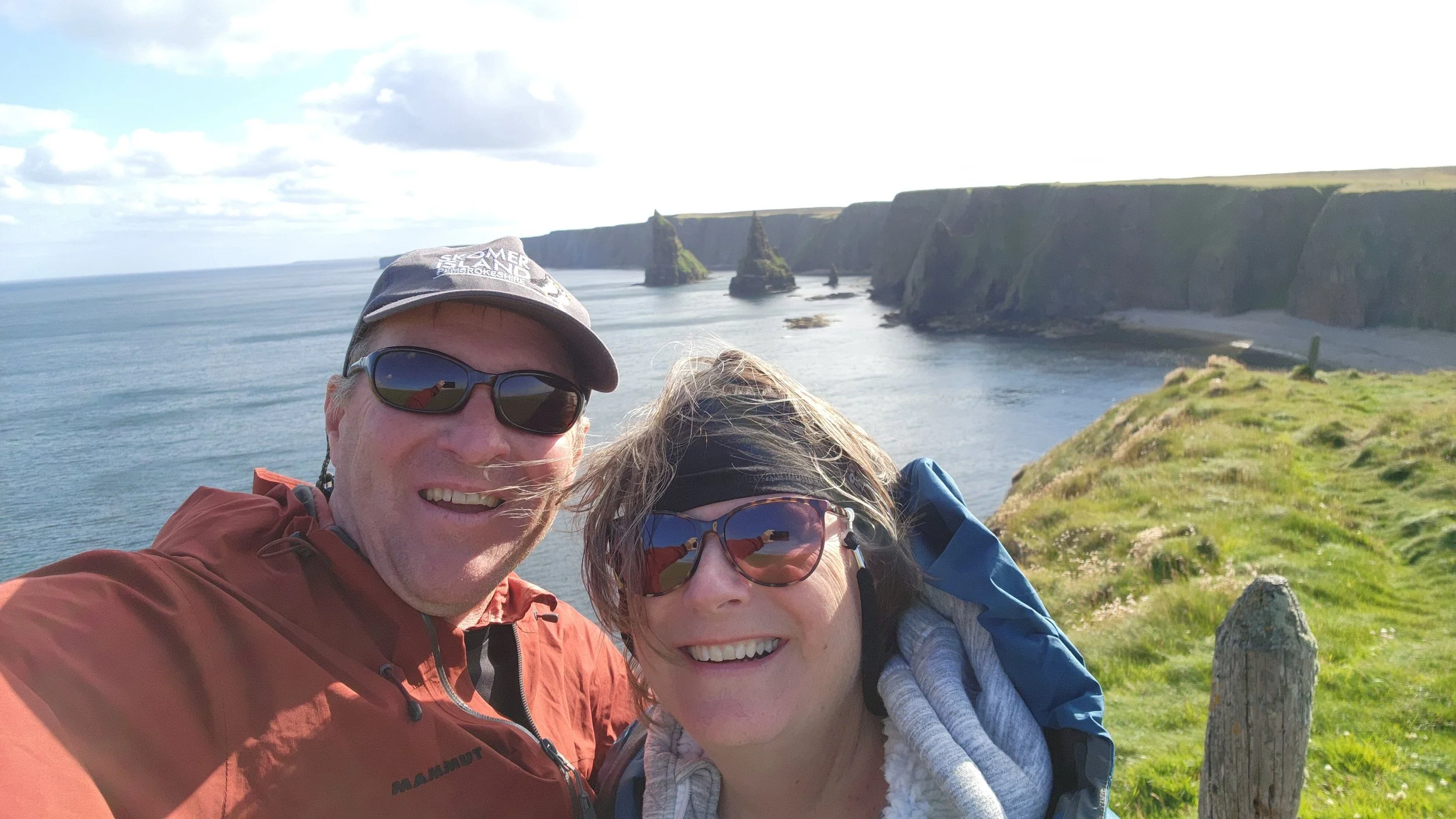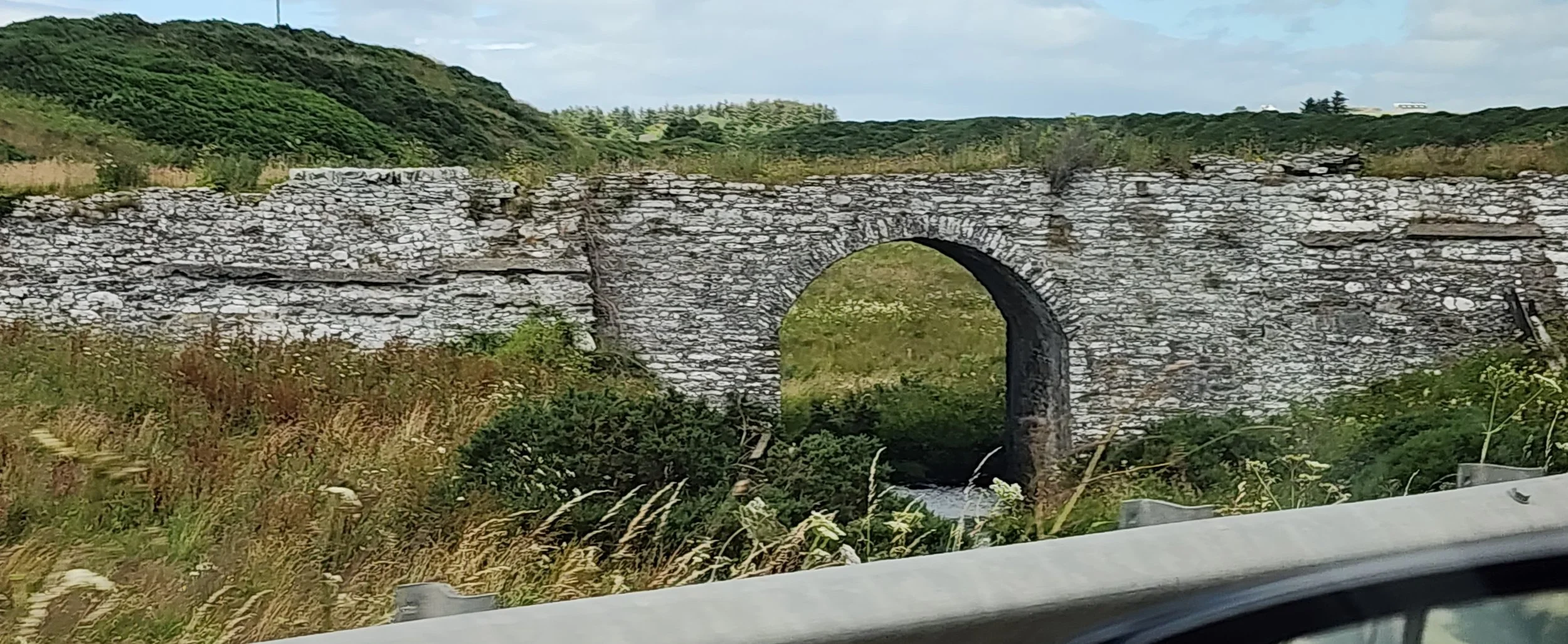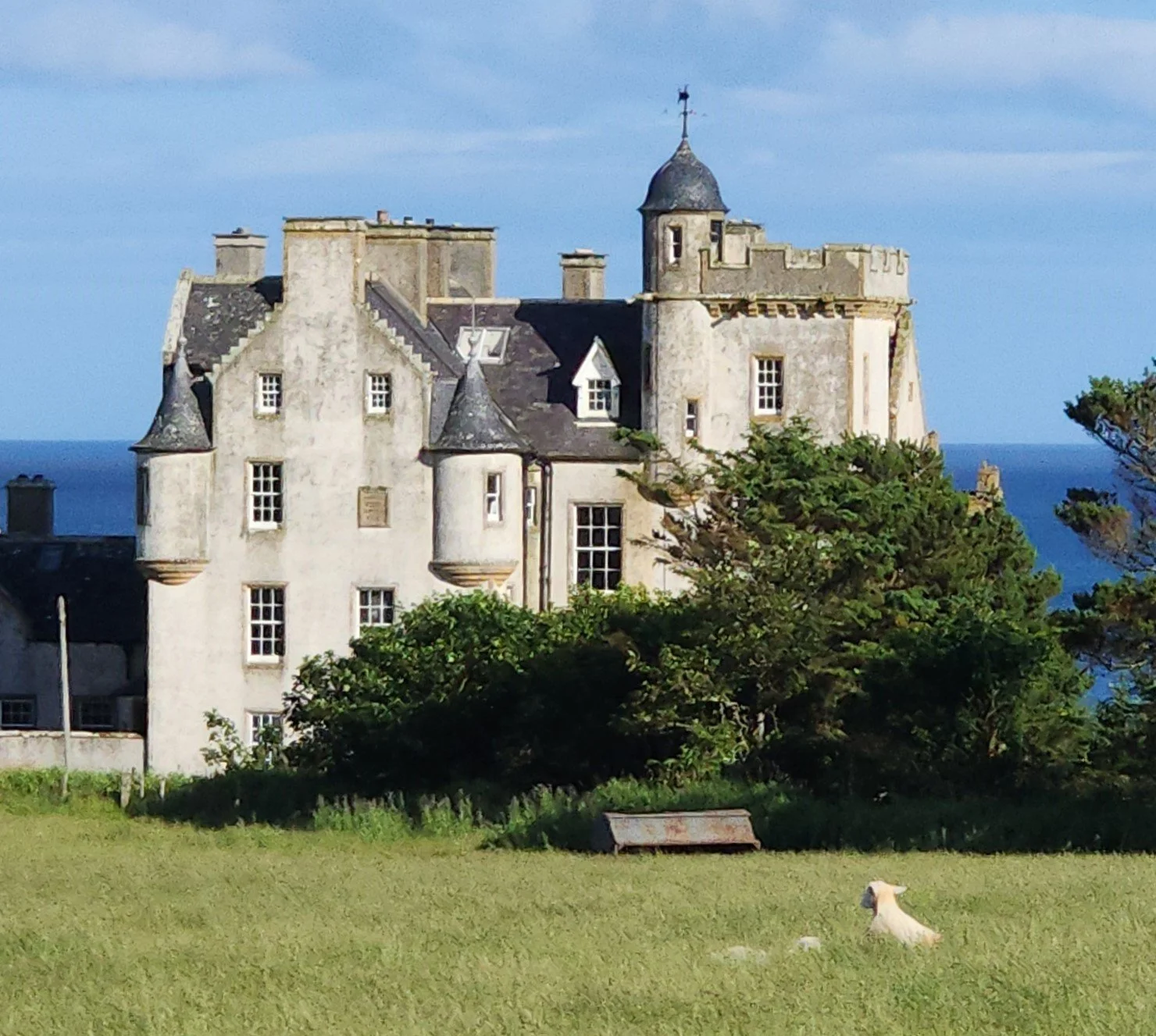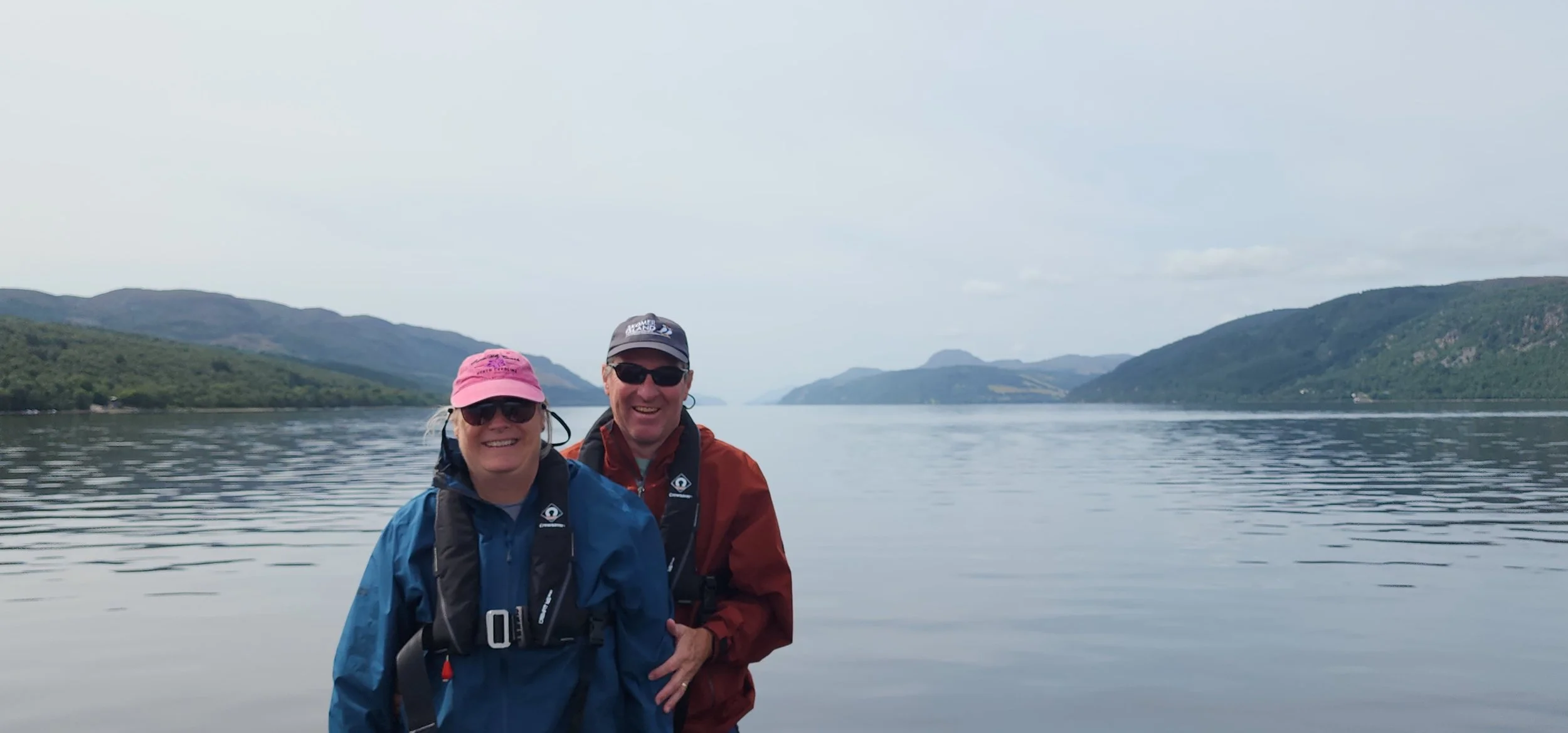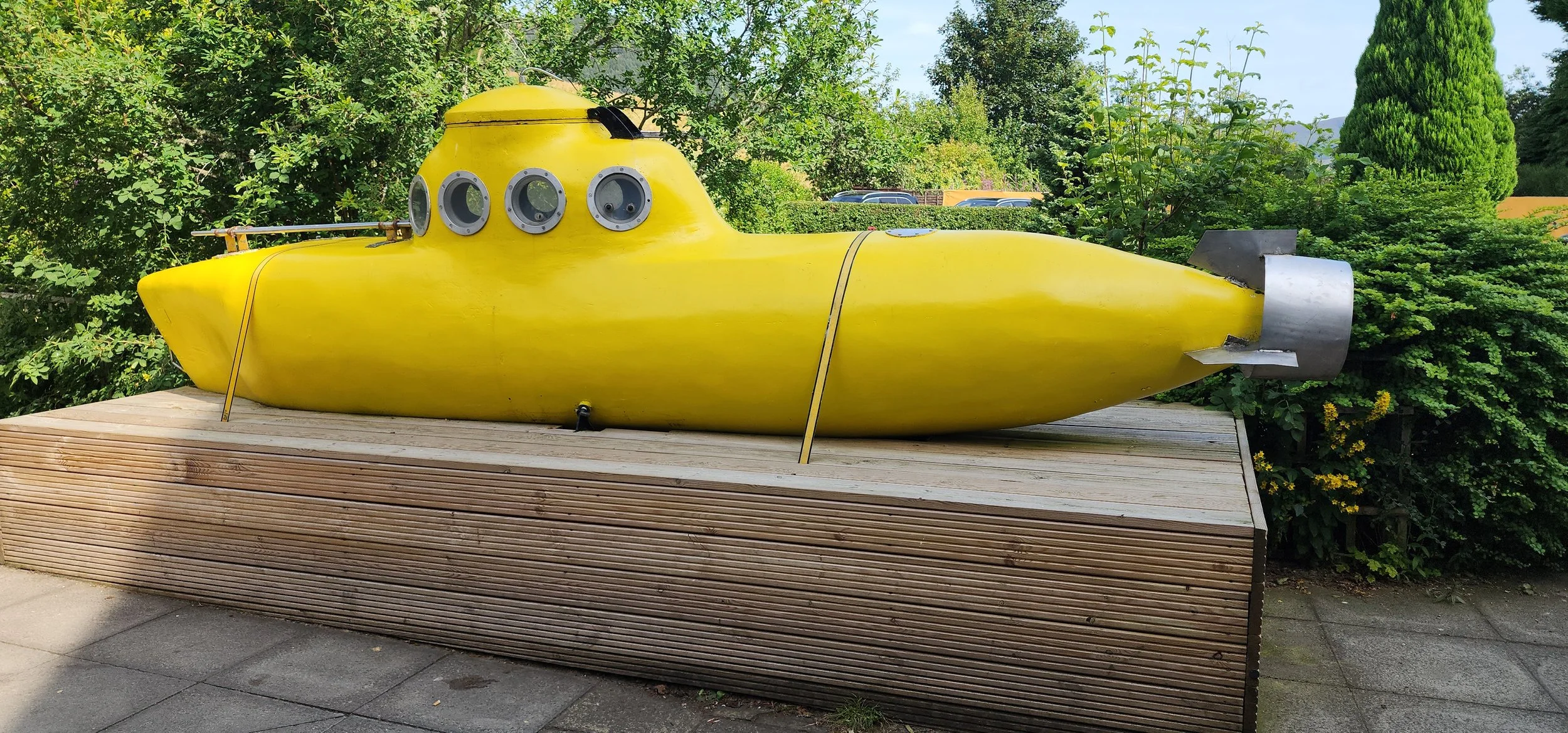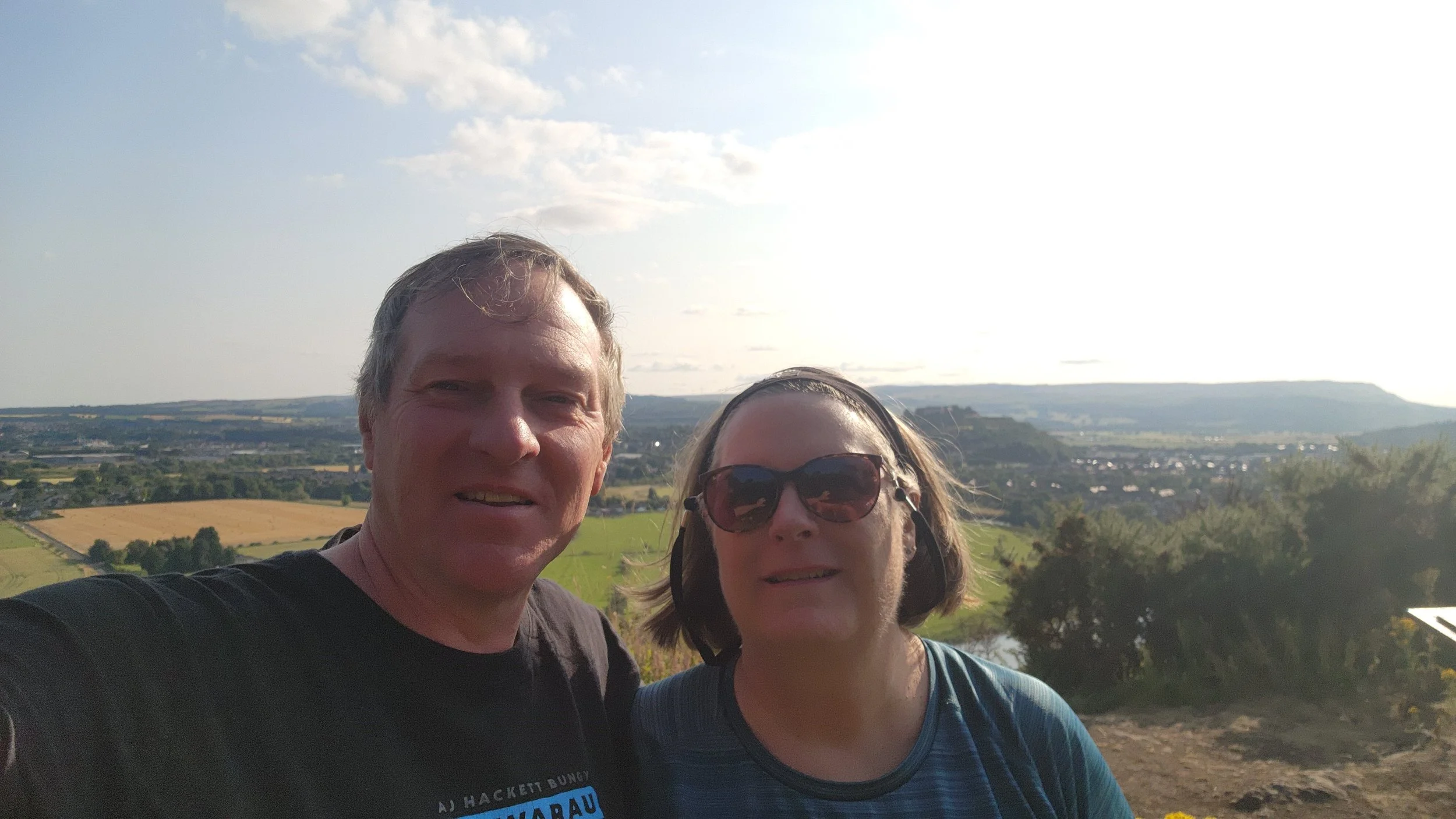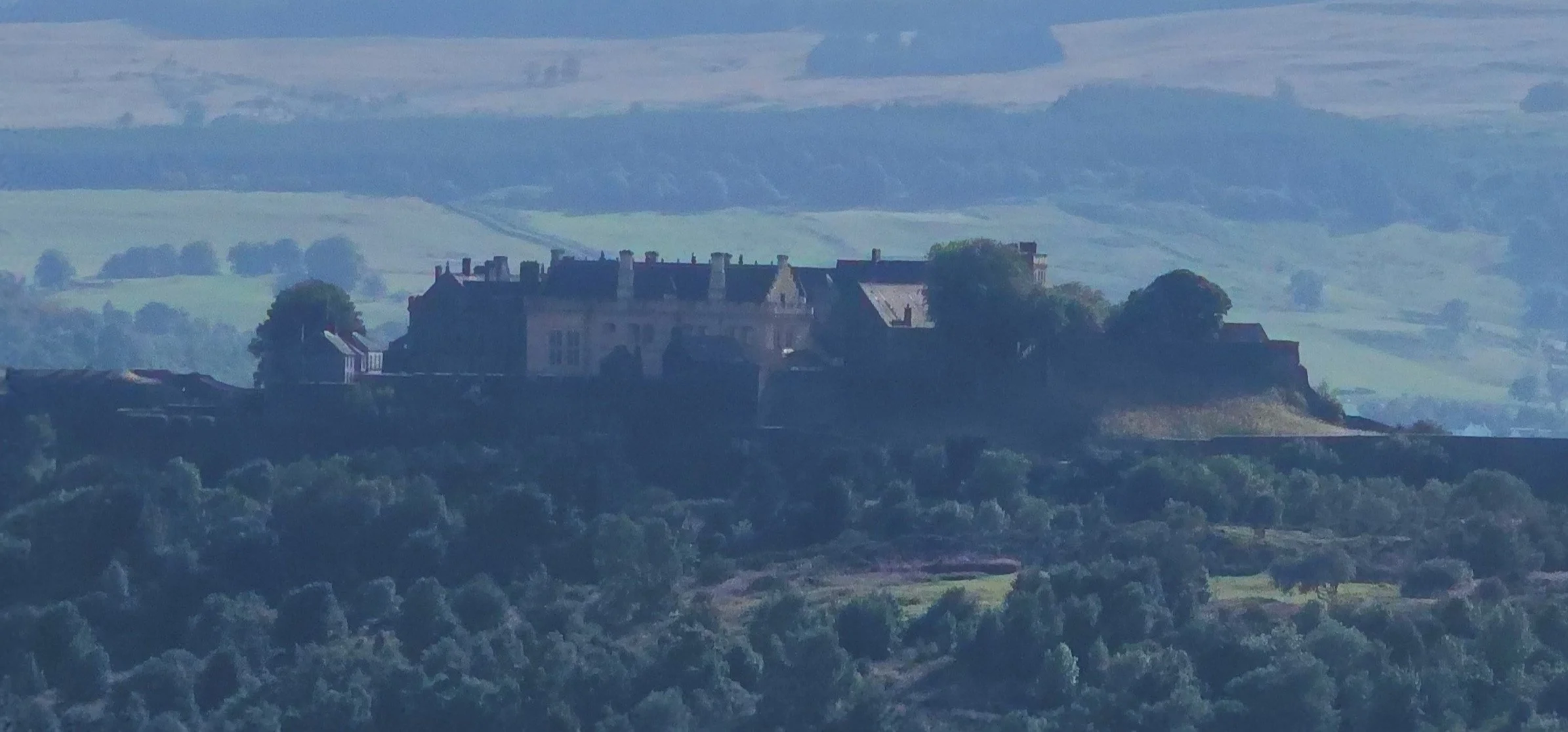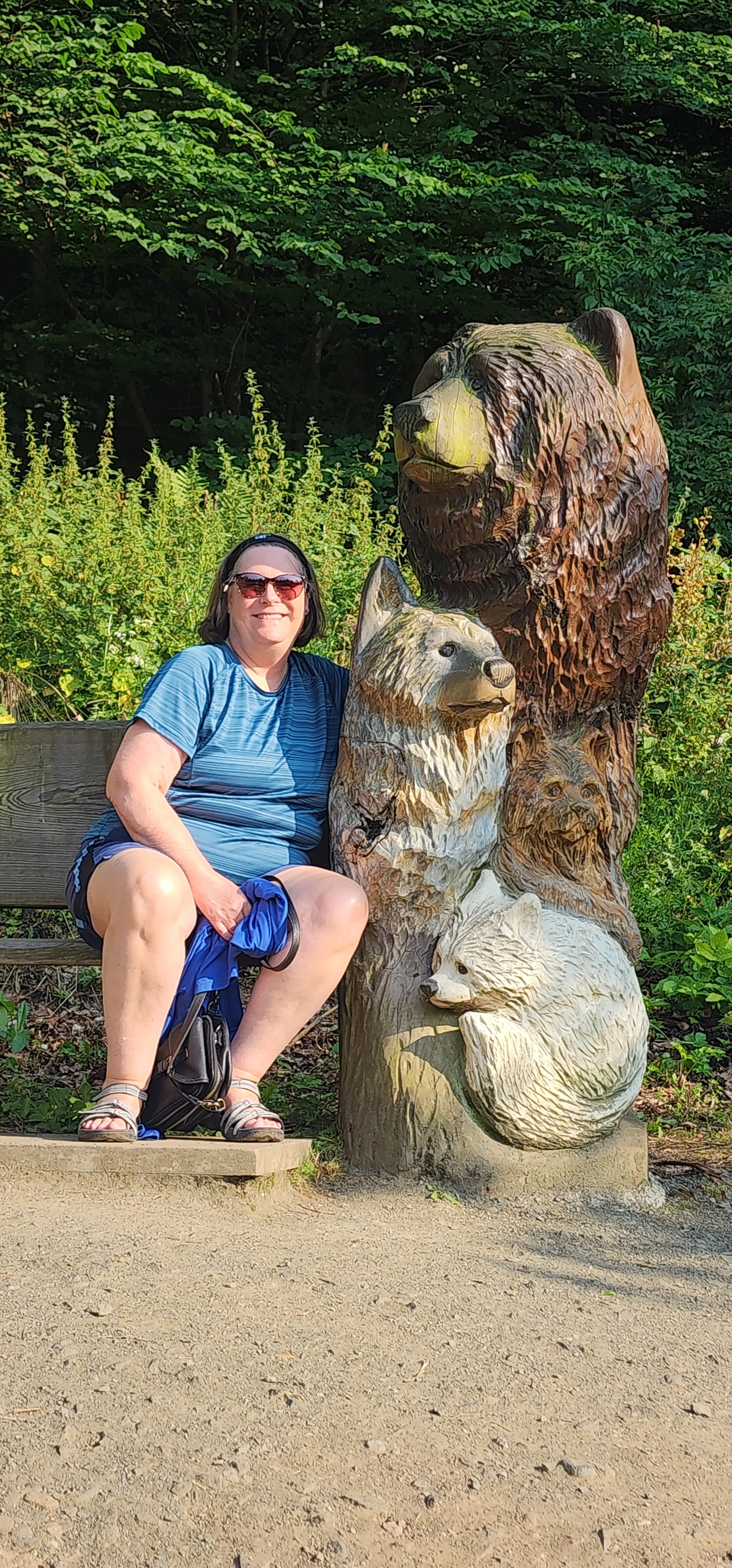Invernessie
28 July to 01 August 2024
Irquhart Castle on Loch Ness
After our visit to Dunvegan Castle on the Isle of Skye, Julie and Anthony drove north through the Scottish Highlands to Inverness. (More info about our route at the end of this blog entry)
Ness Bank Church (a church, not a bank)
The Air B&B was above a bakery a couple of blocks from the Ness Bridge across the Ness River and the City Center. After the long day we wanted something simple for dinner, so Anthony walked out to get a pizza. While waiting for the pie to cook, he took some photos from the Ness Bridge.
Monday Morning, Julie and Anthony visited the site of the Battle of Culloden. The Battle of Culloden, on April 16, 1746, was the decisive clash between the Jacobites and the English Government in the Jacobite uprising of 1745. The Jacobites (politically Tories) supported the Stuart’s (James III) claim to the British Throne. The English Government (politically Whigs) backed the current British monarch George II, a Hanoverian who’s family was imported from Germany. It’s a whole big thing, James V11 and 11 (Stuart) got deposed and William and Mary (protestant) got the throne. W&M didn’t have any kids so Anne (who went back to Charles 11, and also protestant) became queen. Anne didn’t have kids either, so England (the Whigs) brought the Hanoverians over (protestant). The Jacobites didn’t like a foreigner (German) getting the throne, along with other reasons. It’s all very complicated.
English Succession in the 17th and 18th centuries
Julie and Anthony got to the park just in time for a 45 minute guided tour of the Culloden Battle field. The Battle of Culloden features in the Outlander Series (the 3rd Outlander Novel, Voyager, and corresponding TV show in season 3, episode 1) and Julie and Anthony’s understanding of the battle come from historical fiction. Needless to say, our understanding of the battle was at best, incomplete.
Some background to Culloden. Bonnie Prince Charlie (Stuart) lands in Scotland in November 1743 with support from his French and Spanish relatives. The Jacobites quickly controlled Scotland and invaded England as far South as Derby (about 130 miles from London). The Jacobites won all of their battles, in large part because the Scottish Highlanders were a dominant force in hand to hand combat. But promised support from France failed to materialize and the Jacobites retreated to Scotland, instead of continuing to London.
Despite continuing to win ALL of the battles against the Government forces the Jacobite forces continued their retreat all the way to Inverness. French reinforcements and provisions were cut off and the Jacobite forces were hungry and low on ammunition. On 15 April 1746, the Government forces were holed up in Nairn, about 15 miles east of Inverness. Desperate, the Jacobites attempted a surprise attack that evening, hoping the catch them off guard. The weather was miserable, about half of the force (including the top leadership) got lost AND the Government forces were having a birthday party, not sleeping. With no leadership to tell them to attack, the Jacobites retreated back to Inverness, exhausted and hungry.
Our tour took us out into the Culloden battlefields. The red flags indicate where the Government supporters lined up.
On 16 April, the Government forces proceeded toward Inverness. The Jacobites had no choice but to leave Inverness and met them on the edge of the boggy fields of Culloden. Two lines formed and a began exchanging cannon fire. Because they were trained professional soldiers, Government forces could fire 5 times to every one time for the Jacobites. The Jacobites had no other choice but to charge across the field, but were mired down in the bog and their forces were further depleted by musket fire. Even after all that, the Highlanders made it to the first line and with their superiority in hand to hand combat were threatening to break through. At that point the second line of Government forces began firing into the melee, killing forces indiscriminately. The Jacobite forces were defeated, and Bonnie Prince Charlie fled to the Vatican to live out the rest of his life in exile.
The killing ground where the Highlanders met the Government forces in hand to hand combat.
Blue line, where the Jacobite forces stood.
According to the tour guide, the primary misconception was that the 1745 Jacobite uprising was the Scots vs English. The truth was it was a civil war about economics, politics, religion and succession. Scots and English fought on BOTH sides of the conflict.
The battle marked the end of the Jacobite uprisings and led to the harsh suppression of Highland culture and the dismantling of clan structures by the British government.
Gov't Forces line as seen from Jacobite line.
Culloden Memorial
Clan Fraser Memorial
In 1881, a monument was erected to commemorate the battle and stones were placed to memorialize where each of the clan chiefs fell. This was a Victorian era effort to create the image of the brave but barbaric Scottish warrior and perpetuate the Scot vs English misconception. According to modern archeology, these markers have no basis in reality.
From the pictures, the field/bog does not look like much. But once you understand how many people died, so quickly, in that place, it is quite moving.
Loch Ness
That afternoon we took a bus from Inverness to catch a Loch Ness boat cruise. It was a pretty day, and we got some amazing views of the lake.
Details: Loch Ness is 23 miles long, 1.7 miles wide (at its widest) and 733 feet deep (at it’s deepest). At 263 billion cubic feet of water, Loch Ness holds more water than all the lakes in England and Wales combined.
The tour dropped us off at Urquhart Castle, and we had about an our to walk around the ruin.
Monday evening Julie and Anthony walked down the river for dinner.
On Tuesday, Julie and Anthony took the 120 mile drive North to John O’ Groats.
Glenmorangie is Anthony’s favorite Scotch. So he was happy to find the Glenmorangie Distillery is on their route. We had to schedule the tour at 10 AM, but as Jimmy Buffet says, “It’s 5 O’Clock somewhere”.
Aftermath of the post tour whisky tasting. Julie was doing the driving, so Anthony did the tasting.
We wondered why there were Giraffes everywhere, until we saw the Glenmorangie stills. The still necks are longer than normal scotch whisky stills, which gives them an elongated shape.
The Glenmorangie stills.
Majestic Dunrobin Castle is located just a few miles up the road from the Glenmorangie Distillery. Stop me if you have heard this one, Dunrobin Castle is the Ancestral home of the Clan Southerland. Bits for the castle date from 1400 AD (and there is evidence of a medieval fort on the site before that), but most of the current building and gardens were constructed between 1835 and 1850. The castle is a repository of accumulated Clan Southerland stuff, including portraits (and sculptures) of Southerland Clan Chieftains and Chieftainesses and other important family members back to the first Earl of Southerland in the 13th century.
The 8th Earl of Sutherland married his daughter Elizabeth to Adam Gordon in the early 1500s. After the 8th Earl died in 1508, Elizabeth's elder brother, Alexander Sutherland, was declared heir to the title. Elizabeth’s husband had Alexander and his younger brother declared incompetent. That meant the possession of the estate went to Adam Gordon in 1512. In 1518, Adam Gordon left the castle on business, and it was captured by Alexander Sutherland, the legitimate heir. The Gordons quickly retook the castle, captured Alexander and placed his head on a spear on top of the castle tower. Alexander's son John made an attempt on the castle in 1550, but was killed in the castle garden, pictured above. The Gordons changed their surname to Sutherland and have been Earls (and later Dukes) of Sutherland ever since.
Julie and Anthony continued northward to John O’ Groats. Towns seemed to get smaller and farther apart, but their were still plenty of people living on the top of Scotland. John O’ Groats is a pretty little village, with shops and restaurants and a view of the Orkney Islands. It was a bit chilly, and very windy.
The Duncansby Head Lighthouse and Stacks sit a few miles down the coast from John O’ Groats. A short walk across a field full of sheep rewarded us with a terrific view of the stacks.
While Julie was having to do all the driving, Anthony took a ridiculous number of pictures from the car. Here are a few that turned out.
Not Dunrobin but looks like it
On Wednesday, Julie and Anthony took a fast boat tour of Loch Ness. As with other local bus drivers and tour guides we met, our boat driver talked about the Loch Ness Monster with a grin and a twinkle in his eye.
Our Sister Boat
Interesting buildings from Loch Ness
25 Years ago, Steve Fetham, quit his job, sold his house, bought a camper van, and moved to Loch Ness to become a full time Nessie hunter. He says he saw the monster once, in 2004.
The famous 1933 sighting of Nessie was in these waters in front off Urquhart Castle by local hotel manager Adlie McKay. This kicked off the Nessie craze that brings people (Julie and Anthony) to the lake almost a century later.
This sculpture would look good in front of out house.
Thistle sculpture and Highland Coos, where we caught the boat.
After the boat ride, we visited the Loch Ness Centre in Drumnadrochit. The Loch Ness Centre exhibits challenged you to decide if the monster is definitely real, a definitely fake or a possibility but there just isn’t enough evidence to prove Nessie exists (or doesn’t).
The Viperfish, a 20 ft long yellow submarine used for Nessie hunting
Because of the tannins in the water, Loch Ness is extremely murky. Our boat captain says visibility is about 3 feet, making it easy for Nessie to hide.
In 1933, Big game hunter Marmaduke Wetherell found footprints on the shores of Loch Ness. When he died, they discovered this hippo footed ashtray in his things.
This rock created by the Picts in 500-600 AD was discovered on the shores of Loch Ness. The earliest written account of the Loch Ness Monster was in AD 565. A Monk, Lugne Mocumin was in a boat on Loch Ness when he was attacked by a monster. Saint Columba commanded the monster, "You will go no further!" “Do not touch the man! Leave at once!” The monster fled.
The Loch Ness Center had a gorgeous slide show, which provided some mythological representations of the Monster. A shapeshifter, a Kelpie, a Dragon and our old friend the Plesiosaur. Below, artists renditions of Nessie.
Robert the Bruce
On the first of August, we sadly left the Highlands on the way down to Glasgow. We had a brief stop in Aberdeen for lunch and saw a statue of this fine fellow above.
William Wallace Monument
Also on the way was the impressive William Wallace monument, near the town of Stirling. Julie and Anthony took the bus up to the monument, but we were too late to take the tour, so we had a leisurely stroll down.
Stirling Castle
There were some fun carvings on the way down.
Sadly, Julie left her blue longs sleeved Indianapolis Colts Shirt in the bathroom at the Wallace Monument. I guess we will have to go back to a Colts game this fall.
Maps: 1) Skye to Inverness 2) Loch Ness Boat Tour and Urquhart Castle 3) John O’ Groats 4) Loch Ness Boat and Nessie Center 5) Inverness to Glasgow
Travel Note: We had to decide between two routes from Skye to Inverness on 28 July 2024 The one we took was northerly, through a park. The Alternate would have been to the Lochs and a straight line up the center. The second route would have required going back the way we came in. The route we took was not that interesting. In hind sight, we wished we had gone up the Lochs.


